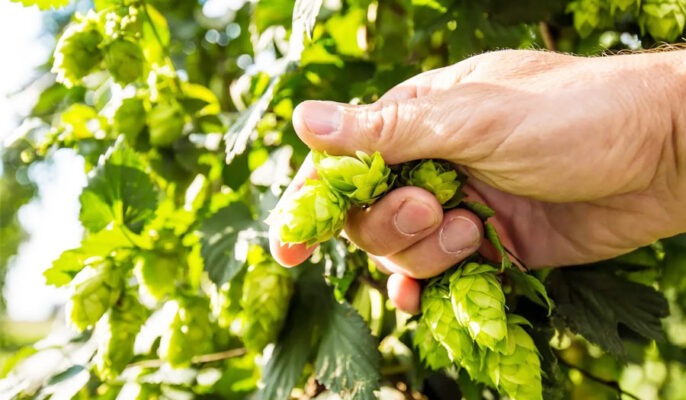The hops used in beer brewing are a plant flower called common hops, whose scientific name is hops. Adding hops during the brewing process gives the beer its signature bitter taste. A rich aroma is also provided at the end. Another huge benefit of adding hops to beer is that it is a natural preservative – it increases the shelf life of beer. With the growing popularity of hop aroma, as experienced in IPAs, more and more breweries are using larger quantities of aroma hops and adding them at more stages throughout the brewing cycle.
What are the hops in beer?
Hops are flowering plants, known as hops. It is a climbing plant with cone-shaped flowers. Inside the flowers, you can find yellow pods. These tiny yellow pods are called lupine and they contain resins and essential oils. Lupinin handles the aroma, bitterness, and flavor of beer.
Hops grow best in temperate climates with fertile soil and full sun. These ideal areas are usually located at similar latitudes on the world map, whether north or south.

Why are hops used in beer?
Craft beer brewers are chasing Luplin hops to help enhance the taste, aroma, and bitterness of beer and balance the sweetness of the malt. Hops can be added at several stages of the brewing process to alter the taste, bitterness, and aroma.
Benefits of Hops
Hops offer so many uses for craft beer that brewers can imagine almost any flavor they can imagine. Hops serve another purpose in beer, to provide an inherent antiseptic quality. The acids in hop resin are antimicrobial and help keep spoilage bacteria out during fermentation. This protector effect continues into the finished beer, where hops also inhibit the development of off-flavors.
When are hops added to the brewing process?
Hops can be added to the wort at three different stages, depending on their role in the beer (flavor, aroma, or bitterness). The same hop variety can be used for these three other purposes, or you can use different hops. In general, all beers have at least one type of hop added to the wort to add bitterness and balance the sweetness of the malt. Without the bitter hops, the beer would taste very sweet.
Most beer recipes will tell you exactly when to add the hops. For example, if the beer needs to be boiled for 60 minutes, the recipe might call for you to add bittering hops with 30 minutes left on the boil.
Generally, bitter hops are added when the wort has collected in the pot and begins to boil. Add flavored hops during the last 15 to 30 minutes of the boil. It imparts a crisp and hoppy flavor to the beer without the accompanying bitterness. Aromatic hops are usually added during the last five minutes of the boil. This is because these hops are volatile, and prolonged boiling can drive away the aroma.
How to Brew Beer with Hops
Techniques like dry hopping (fermenting a beer with hops) add aroma without adding extra bitterness. Wet hopping is also gaining popularity, but is less common due to logistical difficulties.
- To begin the brewing process, barley malt is ground, boiled, and mixed with other grains and sugar sources as desired.
- Brewhouse is adding malt to warm water to activate enzymes. They produce a thick, sugary liquid called wort. The liquid wort is then filtered from the mash for the next step.
- Add hops to the wort and bring it all to a boil. Boiling the hops can make the sweet wort bitter, although more hops can be added after the wort has cooled to provide more flavor.
- Chill the beer, add yeast, and ferment. Timing varies by style.
- The final stage is filtration and storage. Filtration removes particles, but over-filtering can make the beer too clean for many palates.




